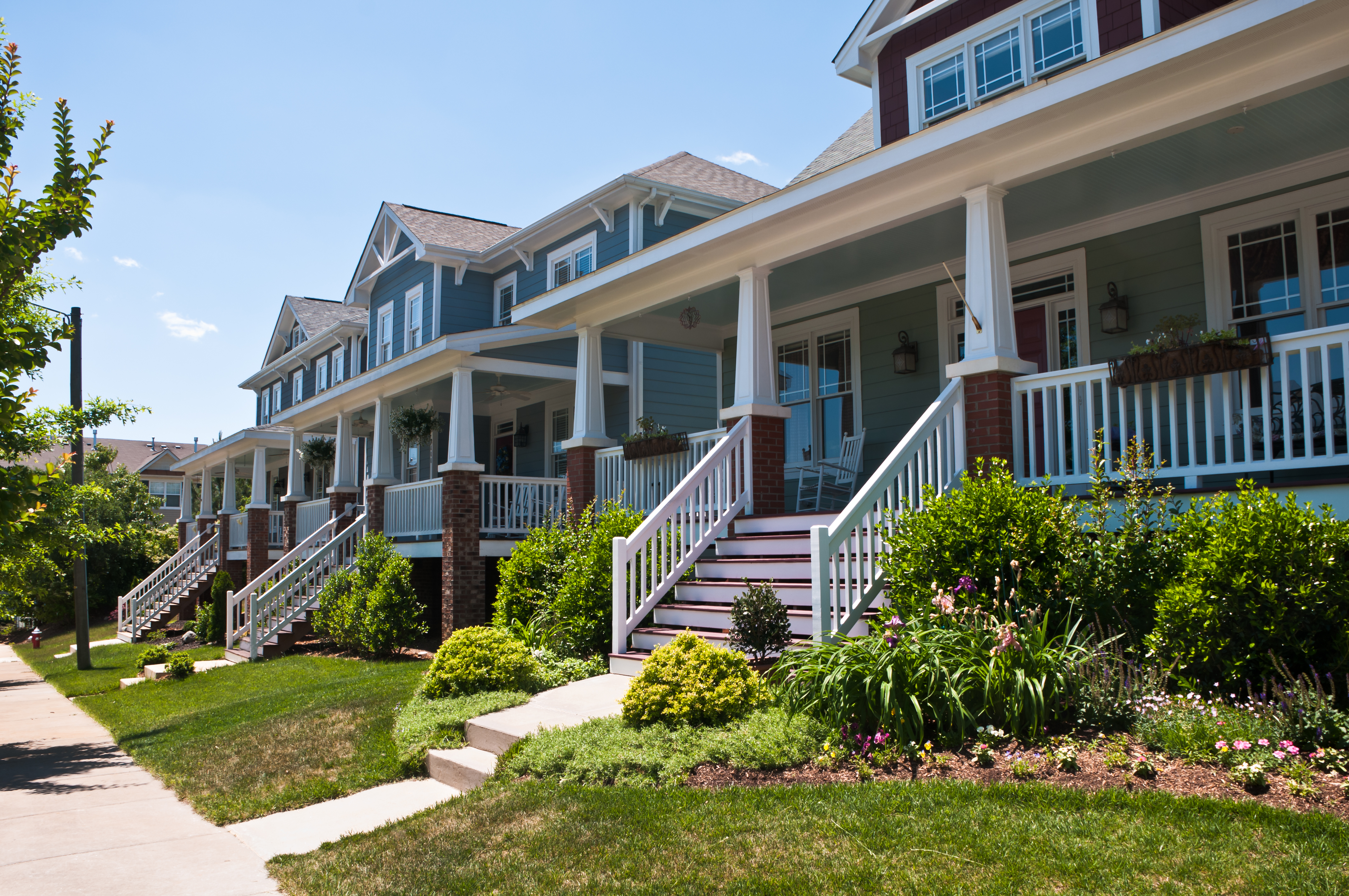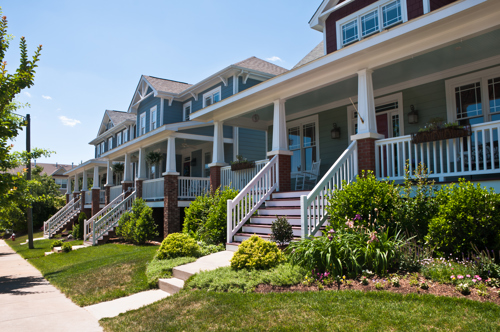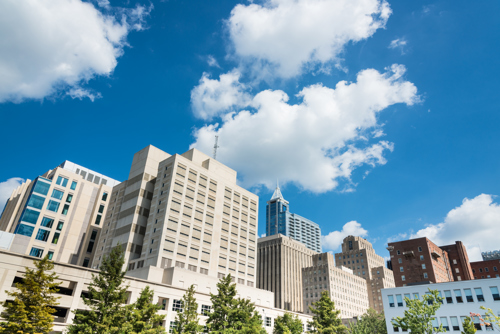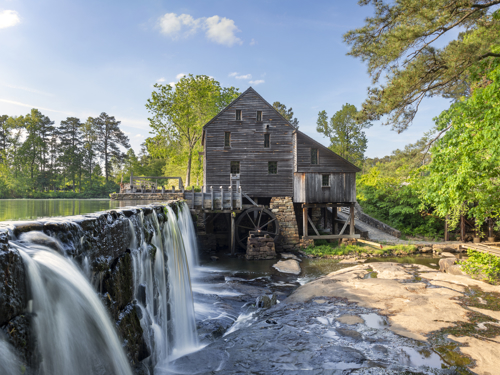Raleigh, the capital of North Carolina, was ranked the second-best place to live in the U.S., and for good reasons. As one of the three regions in the “Triangle,” along with Chapel Hill and Durham, Raleigh boasts a booming job market, affordable houses, diverse communities, proximity to both the beach and the mountains, and an exciting food and nightlife scene. Whether you’re a young professional relocating for work or a couple searching for an affordable metro area to settle down, the “City of Oaks” makes for a great short- or long-term home, with plenty to do in the city and its surrounding areas. In this guide, we’ll walk you through what it's like living in Raleigh, NC, including the cost of living, best restaurants, fun things to do, and more.
1. Living in Raleigh, NC: An Overview
Located in the northeast region of North Carolina — about halfway between New York City and Florida — Raleigh is a 146-square-mile city in Wake County. Its nickname, the “City of Oaks,” was coined by the founding fathers, who made it a mission to preserve Raleigh’s green tracts and parks. Today, there are still 200-plus parks spanning 9,000 acres, connected by a 180-mile greenway system. When you’re not immersed in nature, you can explore Raleigh’s rich art scene and historic sites or explore the city’s forward-thinking food scene, where acclaimed Laotian cuisine exists side by side with James Beard Award-winning chefs putting a spin on comfort food.
- Population: 474,069
- Diversity: 58.3 percent white, 29 percent Black or African American, 11.2 percent Hispanic or Latino, 4.6 percent Asian
- Median age: 34.5
- Median household income: $67,266
- Weather: hot and muggy summers with very cold winters
- Best time to visit: early May to mid June or late August to mid October
- Cold season: December to February
- January is the coldest month; July is the hottest month
Population
Raleigh has a population of 474,069 as of 2019 (about 43 percent of Wake County’s 1,111,761 total residents). Along with Durham, it’s the most diverse city in the state, attracting thousands of people from around the U.S. every year with its tech and research scene. About 58 percent of Raleigh residents are white, with a sizable Black population at 29 percent. (Raleigh was listed as one of the top 20 regions in the U.S. where Black Americans fare best economically, along with two other N.C. metropolitan areas, Charlotte and Durham.) The median household income is $67,266, and the median age is 34.5.
Weather
Raleigh’s weather fluctuates greatly throughout the year, with a 3.5-month hot season between the end of May to mid September when temperatures can climb to 89 degrees Fahrenheit in July, and a three-month cold stint from December to February, with the low point in January (temperatures can drop to 33 degrees). In the winter, ice storms can shut some areas down, but they often melt quickly. There’s risk of property damage from occasional tornadoes and hurricanes, though the latter doesn’t strike often since Raleigh is 100 miles from the coast.
2. What’s the Cost of Living in Raleigh, NC?
According to Payscale, Raleigh’s cost of living is about five percent lower than the national average, with certain expenses, like housing, substantially lower (about 30 percent). That said, Redfin’s data indicates that the city’s median home sale price of $365,500 is the highest it’s been in years (excluding the brief peak to $381,000 several months ago), and marks a 17.9 percent year-over-year growth. Compared to nearby Asheville, Raleigh’s cost of living is about 13 percent lower, and about six percent lower than nearby Charlotte.
- Housing: $365,500
- Rent: $1,468
- Utilities: $143.71
- Groceries: 13 percent more than the national average
- Gas: $2.44
- Storage: $38+
How Expensive Is Renting in Raleigh?
Renting in Raleigh can be tough. One-bedroom apartments have gone up 22 percent in March 2020, and the average rent is comparable to the average mortgage payment, which hover around $1,315. In fact, some data shows that 49 percent of renters in Raleigh spend more than 30 percent of their income on housing. The average rent for a one-bedroom apartment around 957 square feet is $1,468. The most expensive neighborhoods are Worthington ($1,662), Wynford Place ($1,662) and Wynstone ($1,662) and the most affordable are Abbington Ridge ($1,122), Anderson Pointe ($1,122) on average, and Antelope Point ($1,122).
3. The Best Neighborhoods in Raleigh
Raleigh is part of a greater metropolitan area that offers a robust mix of housing options, many with easy access to corporate districts, shopping centers and nature. Every neighborhood has something for everyone, and you’re bound to find a part of the city you love. Here are five of the best neighborhoods in Raleigh.
- Oakwood/Downtown
- Boylan Heights
- North Hills
- Cameron Village
- Morrisville
Oakwood/Downtown
This historic neighborhood is more than 200 years old, and features an array of charming bungalows, newly renovated properties and Victorians surrounded by the city’s iconic, sprawling oaks. With all its shady foliage, you might even forget that you’re in the downtown area. A short walk from the business hub of Raleigh, Oakwood is popular among young professionals who work nearby and are willing to pay a little extra for the convenience.
- Population: 3563
- Median household income: $61,417
- Cost of living: $438K median house price, $1,296 average rent
Boylan Heights
One of Raleigh’s first planned suburbs, Boylan Heights is now a coveted neighborhood just west of downtown. It’s known for its beautiful homes, which flaunt a variety of architectural modes, including Colonial Revivals, Dutch Colonials and foursquares with Craftsman Detailing. Though the prices here are a little higher than other parts of Raleigh, you’re paying to be where it’s all at: moments away from some of the best restaurants, bars and boutiques in the city (and a 10-minute walk to Fayetteville Street!).
- Population: 54,457
- Median household income: $72,500
- Cost of living: $575K median house price, $1,662 average rent
North Hills
It’s one of the city’s fastest-growing areas and located just above the beltline, where couples and families settle down and enjoy easy access to unbeatable entertainment, shopping at high-end chains and small, hip boutiques, the Carolina Country Club, great school districts, and much, much more. Though it’s a more family-friendly part of the city, young professionals who are looking for more luxurious properties often browse North Hills as well. Its convenient proximity to the 440 makes commuting to other parts of Raleigh a breeze.
- Population: 3,355
- Median household income: $131,116
- Cost of living: $675K median house price, $1,350 average rent
Village District (f.k.a. Cameron Village)
Located just west of downtown Raleigh, the Village District has some of the best downtown-adjacent housing deals in Raleigh. Modern condos and ranch-style homes pepper this neighborhood, offering walking distance to the Village District Shopping Center’s 100-plus shops, restaurants and more, as well as the area’s local boutiques, fitness centers and library. There’s a mix of everybody in this neighborhood, with older couples looking to plant roots, professionals taking advantage of its proximity to downtown, the Research Triangle and other hotspots, and some college students.
- Population: 4,038
- Median household income: $73,269
- Cost of living: $675K median house price, $1,350 average rent
Morrisville
Located outside of Raleigh city but well within the Raleigh-Cary metropolitan area, Morrisville is popular for its abundance of housing options geared toward local tech professionals. In fact, it was even ranked the number 10 U.S. city to live in by Money.com for its ideal location in the heart of the Research Triangle and diverse international population. It’s perfect for families who want a quiet, safe and tight-knit community with great schools, career growth opportunities and affordable housing.
4. What Are the Best High Schools in Raleigh?
Schools in Raleigh are part of the Wake County Public School System (WCPSS), which includes 191 schools (31 high schools) and 161,907 students total. As the 12th-largest school system in the country, Wake serves a large population of students, and the sheer number isn’t always easy to handle. In fact, as of October 2021, hundreds of Wake County students are set to be reassigned to help fill three new schools and reduce overcrowding — which has left parents and their children in an awkward position. If you have kids and school is a priority, try to live as close to your target school as possible.
That said, Wake County boasts some of the best schools in North Carolina and even the country. Here are some of the best:
- Type = public
- Average graduation rate = 99 percent
- Average SAT = 1310
- Average ACT = 29
- Student-to-Teacher Ratio = 21:1
- Type = public
- Average graduation rate: 97 percent
- Average SAT = 1330
- Average ACT = 30
- Student-to-Teacher Ratio = 20:1
North Carolina School of Science and Mathematics
- Type = public
- Average graduation rate: N/A
- Average SAT = 1440
- Average ACT = 33
- Student-to-Teacher Ratio = 7:1
- Type = public, charter
- Average graduation rate: 95 percent
- Average SAT = 1370
- Average ACT = 31
- Student-to-Teacher Ratio = 14:1
Wake NC State University STEM Early College High School
- Type = public
- Average graduation rate: 90 percent
- Average SAT = 1310
- Average ACT = 29
- Student-to-Teacher Ratio = 17:1
- Type = private
- Average graduation rate: 100 percent
- Average SAT = 1400
- Average ACT = 32
- Student-to-Teacher Ratio = 6:1
5. What Are the Jobs in Raleigh, NC Like?
In 2020, “The Wall Street Journal” ranked the hottest job markets in the U.S., with Raleigh coming in hot at number seven, just behind Salt Lake City and San Francisco. (From 2019 to 2020, the city saw wage growth of 4.6 percent and job growth of 2.1 percent.) After a slight downturn during the height of the pandemic, Raleigh is bouncing back. Tech job openings in North Carolina are up 22.7 percent compared to March 2020, with a third of them in Raleigh.
As the capital of North Carolina, Raleigh is a hub of government jobs, with thousands of residents employed by the state. That said, Raleigh (and the Research Triangle Region in particular) is a leader in cleantech, advanced manufacturing, IT/technology and life sciences, with five of the top employers in the Wake County region being:
- Duke University and Duke Health Systems
- WakeMed Health & Hospitals
- IBM
- Cisco Systems
- SAS Institute, Inc.
Though the median salary for Raleigh residents is $67,266, according to the latest census data, here are the average salaries for the most popular jobs in the Raleigh and Wake County areas, according to Payscale:
- Software Engineer: $82,523
- Project Manager: $75,432
- Operations Manager: $63,490
- Mechanical Engineer: $71,046
Finally, if you’re wondering where to find jobs in Raleigh, here are some resources with open positions:
- Find Raleigh jobs on Indeed
- Find Raleigh city jobs through the City of Raleigh
- Find Raleigh jobs through the Government Jobs
- Find Raleigh jobs through ZipRecruiter
- Find Raleigh jobs through Glassdoor
- Find Raleigh jobs through LinkedIn
6. The Best Things to Do in Raleigh
If you’ve never lived in North Carolina before, you may wonder what there is to do in Raleigh. With its mixture of scenic nature enclaves, exciting and innovative restaurants and annual festivals every month of the year, it’s little surprise that Raleigh (and its neighboring city Durham) were ranked the number two place to live by “U.S. News & World Report” in 2021.
Parks & Attractions
- Historic Yates Mill County Park (FREE). This 174-acre park in Wake County is just southwest of downtown Raleigh. Here, you’ll find a wildlife sanctuary complete with a research center as well as the county’s last remaining water-powered gristmill. Several miles of hiking trails make for a refreshing weekend trek, and the park’s serenity makes it a great place to unwind from city life and get in some quiet contemplation. Though admission is free, a tour of the mill — you’ll get to see the corn grinding process and even buy fresh cornmeal — costs between $3 and $5.
- Fayetteville Street (FREE). Downtown Raleigh’s central thoroughfare was closed off to cars back in the 1970s and became a pedestrian mall. In the years since, Fayetteville Street has exploded with some of the most exciting restaurants, galleries and bars in the Raleigh (and surrounding) area, and there’s plenty of energy during the day (when professionals flock there for lunch) and evenings alike. Keep an eye out for the Raleigh Downtown Farmers Market on Wednesdays from late April through September, and the music and arts festivals throughout the year.
- Lake Crabtree County Park (FREE). Pack a picnic, bring a book and wear your sunscreen, because a visit to Lake Crabtree County Park is an unbeatable daytrip of its own. Perfect for kayakers, hikers, swimmers and mountain bikers, the park hugs the shore of the enormous 520-acre Lake Crabtree, located about 14 miles (a 22-minute drive) from downtown Raleigh. You can go on hikes, rent a boat, fish and more, without breaking the bank.
- North Carolina Museum of Natural Science (FREE). Whether you’re going alone or taking your kids in tow, the North Carolina Museum of Natural Science has plenty to delight and excite visitors of all ages. This (free!) attraction features seahorse bioramas, a living conservatory of butterflies, a nature research section where you can watch scientists at work and plenty of other permanent and rotating exhibits.
Iconic Events
- Meet in the Street Festival (FREE). Meet in the Street is an annual event presented by the Wake Forest Area Chamber of Commerce. On May 7, 2022 (from 10 a.m. to 4 p.m.), downtown Wake Forest — about a half-hour drive from Raleigh — will erupt with family-friendly festivities, including live jazz and other performing artists, food vendors and hundreds of booths featuring arts and crafts, vendors and more.
- Longleaf Film Festival (FREE). This free-to-attend film festival is held annually at the North Carolina Museum of History in downtown Raleigh. Dedicated to celebrating the best of independent film, this weekend of screenings on May 13 and 14, 2022 will feature a jury-selected marquee of submissions that have some connection to the Tar Heel State.
- North Carolina State Fair ($5+). The capital city is home to the largest annual event in the state, with more than one million attendees flocking to Raleigh for the N.C. State Fair in 2017. For 11 days in October, you can enjoy thrilling rides, nostalgic fair foods, fireworks, live music and shows that have been part of the community’s history for more than 150 years.
- First Night Raleigh (FREE). There’s no better way to welcome the new year than with First Night Raleigh, a single, all-day showcase of music, dance, comedy and other performances across 35 venues, all leading up to the countdown, acorn drop (yes — acorn drop) and fireworks show.
Best Places to Eat
- $ Poole’s Downtown Diner (@poolesdiner). Ashley Christensen is a James Beard Award-winning chef who’s opened a number of restaurants in the Raleigh area: Beasley’s Chicken + Honey, Fox Liquor Bar, Death & Taxes, Poole’side Pies, Clubhouse and, of course, Poole’s Downtown Diner. Here, Christensen reimagines American comfort food with creative seasonal offerings that draw from local growers and artisan producers, resulting in an ever-changing chalkboard menu that features the best flavors of North Carolina.
- $ Benchwarmers Bagels (@benchwarmersbagels). Get here early, because the bagels sell out fast (and they close in the early afternoon). Benchwarmers fuses together a wood-fired oven, heirloom grains, fresh-milled flour and a special fermentation process to take the traditional concept of a bagel into a new, dynamic territory. Swing by for bagels alone or a fancy bagel sandwich, such as the #2 featuring duck rillette, sour cherry cream cheese, pickled onions and whole grain mustard. Pizza Nights from Thursday to Saturday features a new wood-fired pie every week.
- $$ The Fiction Kitchen (@thefictionkitchen). Don’t be fooled — this vegan, vegetarian and gluten-free haven celebrates the possibilities of vegan cuisine for their Wednesday-Saturday-night services. Once a pop-up phenomenon, the restaurant is now a farm-to-fork highlight of the Raleigh food scene. Everything on the menu looks delicious: enjoy the cast-iron cornbread with vegan butter and hickory syrup and follow with a creamy risotto featuring truffled cashew cream and seasonal veggies. VEGAN, VEGETARIAN and GLUTEN-FREE OPTIONS AVAILABLE.
- $$ Bida Manda (@bidamanda). Bida Manda — the Sanskrit ceremonial term for “father and mother” — explores the diverse culinary history of Laos, with its Thai, Vietnamese, Chinese and French influences. Start off the meal with one of the restaurant’s cocktails or a selection from its extensive wine and beer list (the Lilac Lotus, with butterfly pea tea gin, elderberry liqueur, cucumber syrup and fresh lime juice, is a great pick). Follow that up with crispy lettuce rice wraps, luang prabang lemongrass sausage and tom khem (caramelized short ribs and pork belly in sweet soy and ginger sauce) for an unforgettable meal. Be sure to check out their sister dim sum restaurant and craft beer paradise: Brewery Bhavana (@brewerybhavana). GLUTEN-FREE AND VEGETARIAN OPTIONS AVAILABLE.
- $ Guasaca (@guasacarestaurantnc). Arepas — made with a corn-based dough that’s griddled before being stuffed with filling — are the crown jewel of Guasaca, where you can build your own arepas and bowls based on an extensive menu of meats, vegetarian and vegan proteins, fillings, sauces and extras. It’s a no-frills but flavor-packed option that’s left locals and visitors commenting that they regret only buying two when they were in. GLUTEN-FREE, VEGETARIAN, and VEGAN OPTIONS AVAILABLE.
7. Planning Your Move
Planning your move to Raleigh may not be stress-free, but we’ve put together tips and guides to help make the process as seamless as possible. Check out the following resources to plan every step of your move:
- Essential Tips for Packing and Moving While You Sell Your Old House
- Tips on Staging a Home for a Quick Sale
- The Essential Guide To Selling on Craigslist and Facebook Marketplace
Be sure to download our checklists, too:













